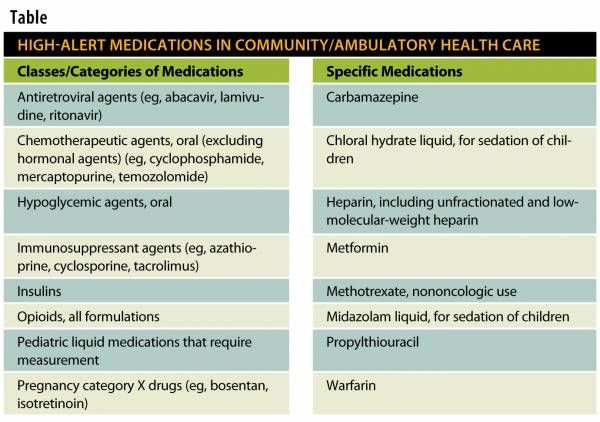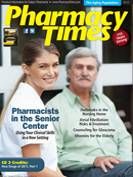Publication
Article
Pharmacy Times
High-Alert Medications for Community/Ambulatory Health Care
Author(s):
Despite their differences, pharmacists in the community and ambulatory care settings can share risk-reduction strategies.
Despite their differences, pharmacists in the community and ambulatory care settings can share risk-reduction strategies.
High-alert medications carry a significant risk of causing serious injury or death to patients when they are used in error. Although mistakes may or may not be more common with these drugs, the consequences of an error are clearly more devastating to patients.
For years, the Institute for Safe Medication Practices (ISMP) has published a list of high-alert medications for acute care settings. In fact, that list has been the focus of medication error prevention activities in individual hospitals, large health systems, statewide initiatives, and national campaigns throughout the United States. For example, The Joint Commission published the ISMP list of high-alert medications in its November 19, 1999 Sentinel Event Advisory, and urged health care organizations to implement selected risk-reduction strategies around the use of these drugs.
The Institute for Healthcare Improvement’s 5 Million Lives Campaign includes the reduction of errors with high-alert medications as one of the recommended interventions, particularly focusing on anticoagulants, insulin, and opioids. Although many medications on ISMP’s current list, such as oral hypoglycemic agents, insulin, and opioids, would be considered high alert in all environments, a similar list has never existed specifically for community and ambulatory care settings—until now.

In June 2006, ISMP began the process of identifying high-alert medications dispensed in community settings. An extensive review and analysis of medication errors submitted to the ISMP Medication Errors Reporting Program was conducted to identify medications that have led to patient harm when misused. ISMP then distributed a survey to learn if ambulatory care practitioners believed the medications identified and listed in the survey should be considered high-alert medications. Over 450 responses to the survey were received.
In 2007, ISMP received grant funding from the Agency for Healthcare Research and Quality to study and develop tools assessing risks and gauging the impact of system and behavioral changes on these risks. One of the main objectives of this research was to identify a list of high-alert medications dispensed from community pharmacies.
Using the results from the 2006 survey, data and literature about preventable adverse drug events, and a small focus group of ambulatory care pharmacists and medication safety experts, ISMP compiled a list of high-alert medications for community/ ambulatory health care (Table). The list is also available online at: www.ismp.org/communityRx/tools/ambulatoryhighalert.asp.
When choosing error-reduction strategies to reduce the risk of errors in your organization, employ a mix of higher- and lower-leverage strategies that focus on system issues and address human factor issues for those who work within that system. These strategies may include using automated alerts; standardizing the dispensing of these products; employing redundancies, such as automated or independent double checks, when necessary; and instituting mandatory patient education for high-alert medications. Although lower-leverage strategies may be used initially, we must realize that they will not be as effective for long-lasting error prevention when used alone.
Because an individual cannot be expected to compensate for weak systems, routinely evaluate the error-prevention strategies being used in your organization for high-alert medications. For more information about choosing effective errorprevention strategies, read “The Best Error-Prevention Tools for the Job” from the April 2007 issue of Pharmacy Times at http://phrmcyt.ms/sDn05v. PT
Table 2. Rank Order of Error Reduction Strategies
Error Reduction Strategy
Fail-safes and constraints
High Leverage
Forcing functions
Automation and computerization
Standardization and protocols
Checklists and double check systems
Rules and policies
Education / Information
Low Leverage
Dr. Gaunt is a medication safety analyst and the editor of ISMP Medication Safety Alert! Community/ Ambulatory Care Edition.







